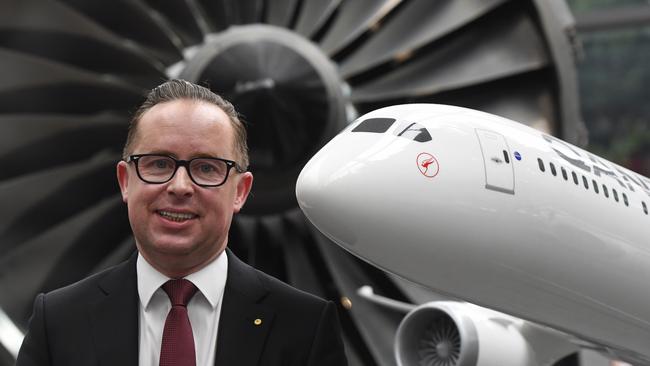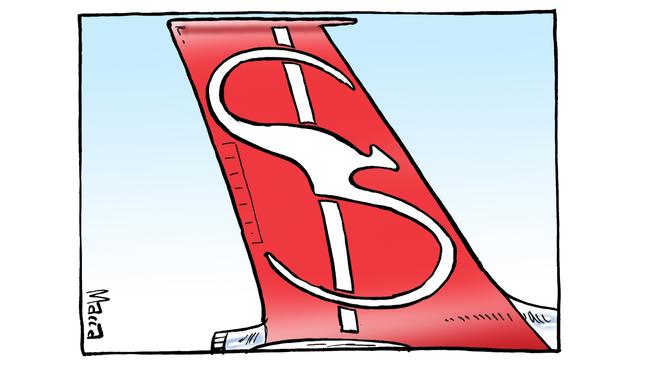Resurgent Qantas plans for new airline class — it’s own pilot school
QANTAS chief Alan Joyce has announced the flying kangaroo will set-up its own flight academy to bridge a looming pilot shortage.
Business
Don't miss out on the headlines from Business. Followed categories will be added to My News.
QANTAS Airways chief Alan Joyce has announced the flying kangaroo will set-up its own flight academy to bridge a looming pilot shortage.
And the flag carrier will lavish another $378 million on investors through a share buyback as it reaps the spoils of its dramatic return to prosperity in recent years.
QANTAS POWERED BY MUSTARD IN BIOFUEL FLIGHT FROM LA
QANTAS REVEALS SECOND DREAMLINER
QANTAS REBUKED FOR PUTTING PROFITS AHEAD OF FLEET UPGRADES
AUSTRALIA AIRPORTS TESTING FACIAL RECOGNITION TECHNOLOGY
Mr Joyce made the revelations yesterday as the airline posted a net profit of $607 million for the six months to December — up 18 per cent from a year earlier.
Qantas said the tally fell short of its record $688 million first-half haul two years ago as this term the airline had shouldered $119 million in extra costs to pay for redundancies and introduce the Dreamliner aircraft.
In initiatives aimed at its everyday shareholders, Qantas will pay an unfranked interim dividend of 7c as well as forking out for the on-market share buyback.
It will take the total spent on buybacks in the past two years to $1.617 billion, with the number of Qantas shares on issue cut by 24 per cent since October 2015.

Qantas shares surged on the revelations, closing 5.9 per cent higher at $5.58 in their biggest one-day spike since mid 2016.
Mr Joyce said Qantas was moving to face a global pilot shortage by spending $20 million next financial year to establish a flight academy.
He is asking states for support, saying it could boost their economies and help provide pilots for the broader aviation industry — not just Qantas.
“We are looking to each of the states and territories, not only on what incentive packages they typically provide to other companies and other industries doing similar things that would be available to the Qantas Group, but what facilities they may have already,” Mr Joyce said.

The initiative would “obviously need a functional regional airport”, he said. “The investment initially for us will be up to $20 million and that will grow over time as we grow the school.
“We have a lot of partners that we will continue to talk to and, if they want to avail themselves of this facility in the long run, we will be happy to do that on the right commercial terms.”
Boeing last year estimated global airlines would need 640,000 new pilots by 2036, with 40 per cent of those in the Asia-Pacific region.
Mr Joyce said the airline was now well placed after years of changes, including extensive redundancies, route changes and aircraft retirements.
The first-half result includes $181 million in benefits from the airline’s restructuring program, he said, with a full-year target of $400 million.
Net passenger revenue rose to $7.493 billion — from $7.064 billion in the same period a year earlier — while freight revenue jumped from $416 million to $440 million.
Citi analysts said Qantas’s domestic division was again a standout performer with 5.3 per cent revenue growth and a 20.4 per cent lift in earnings before interest and tax on an underlying basis, which excludes one-off items.
WITH AAP
Originally published as Resurgent Qantas plans for new airline class — it’s own pilot school
